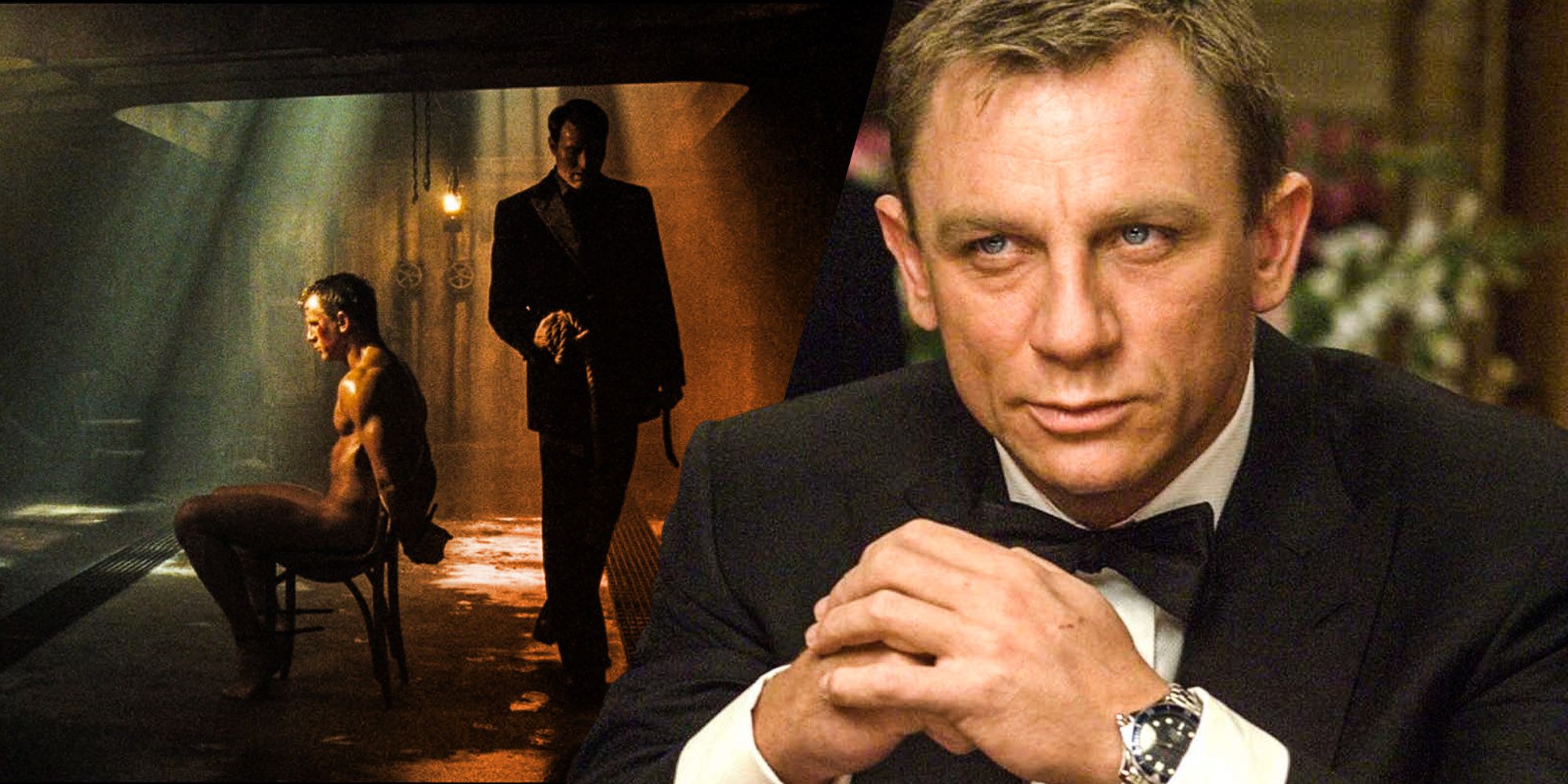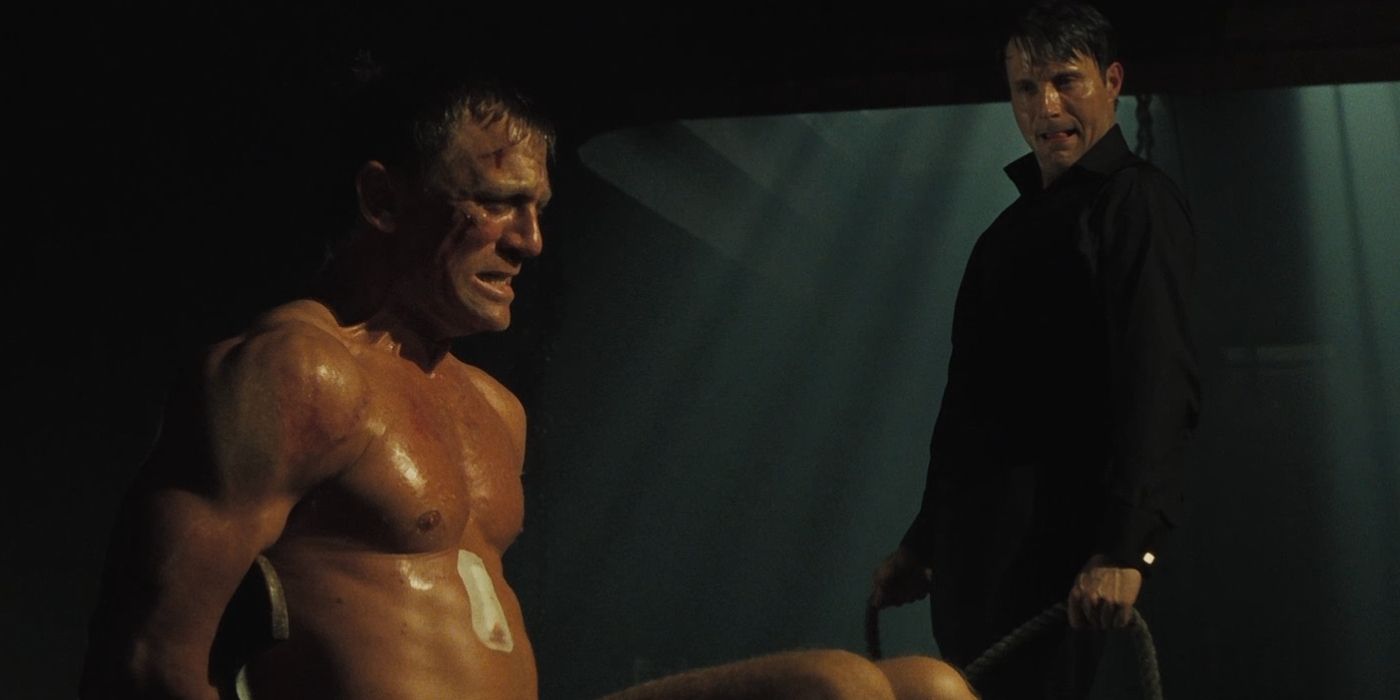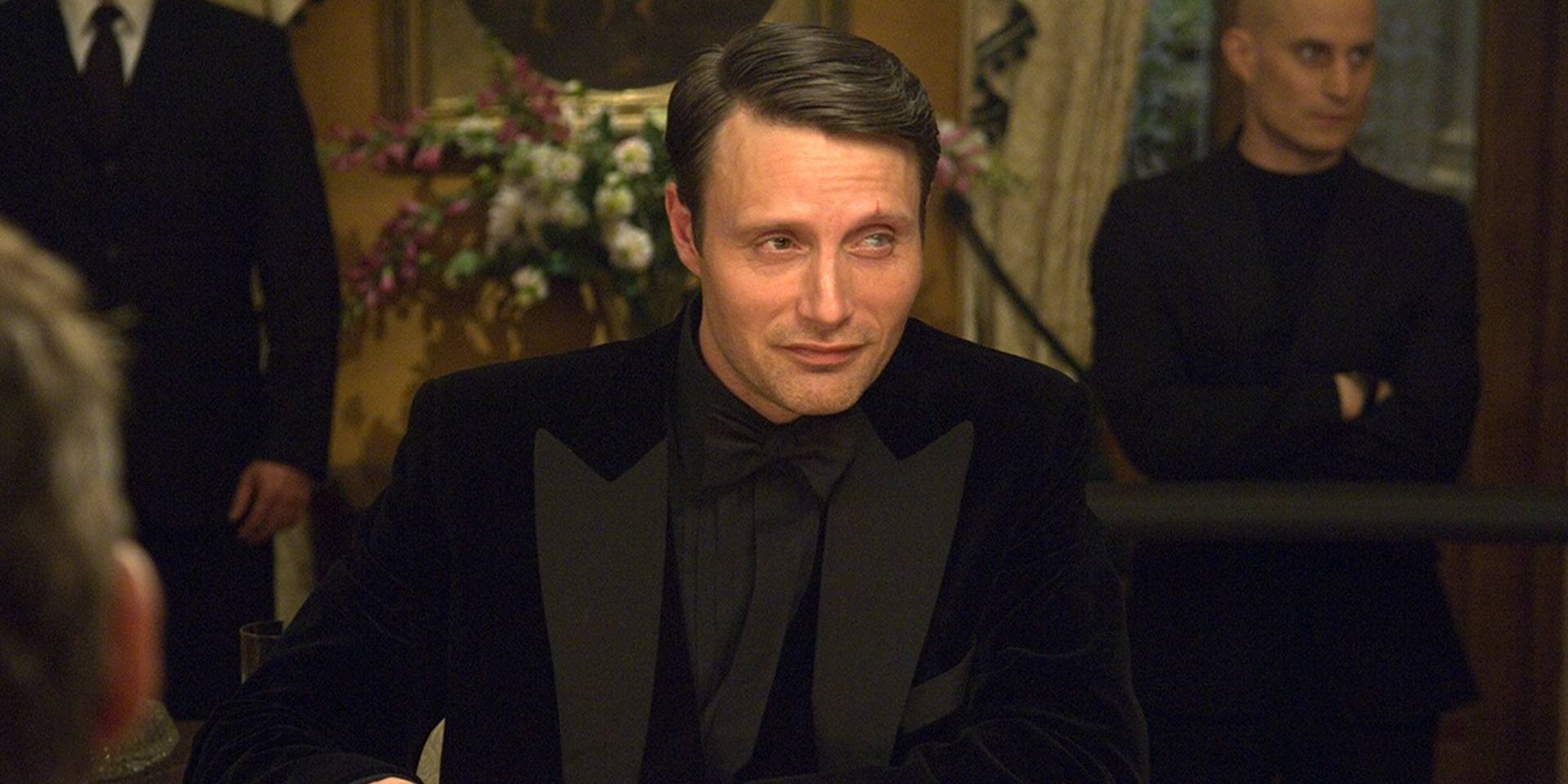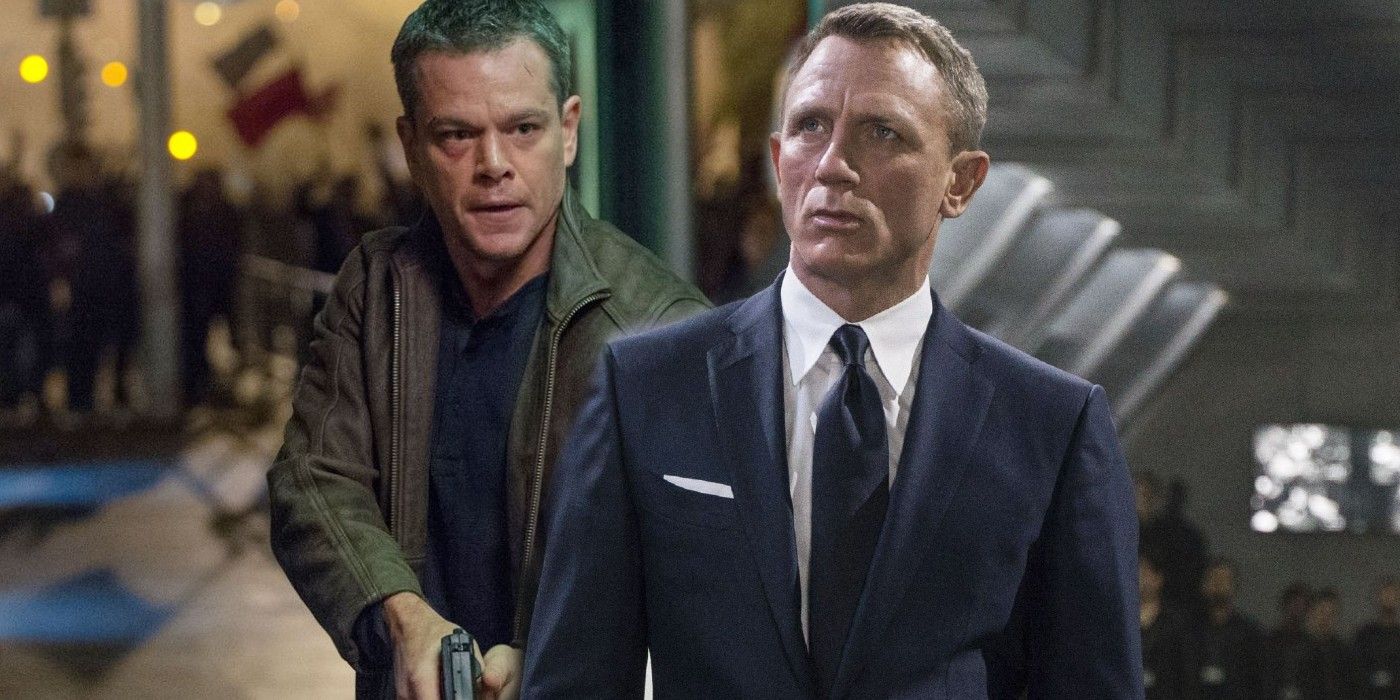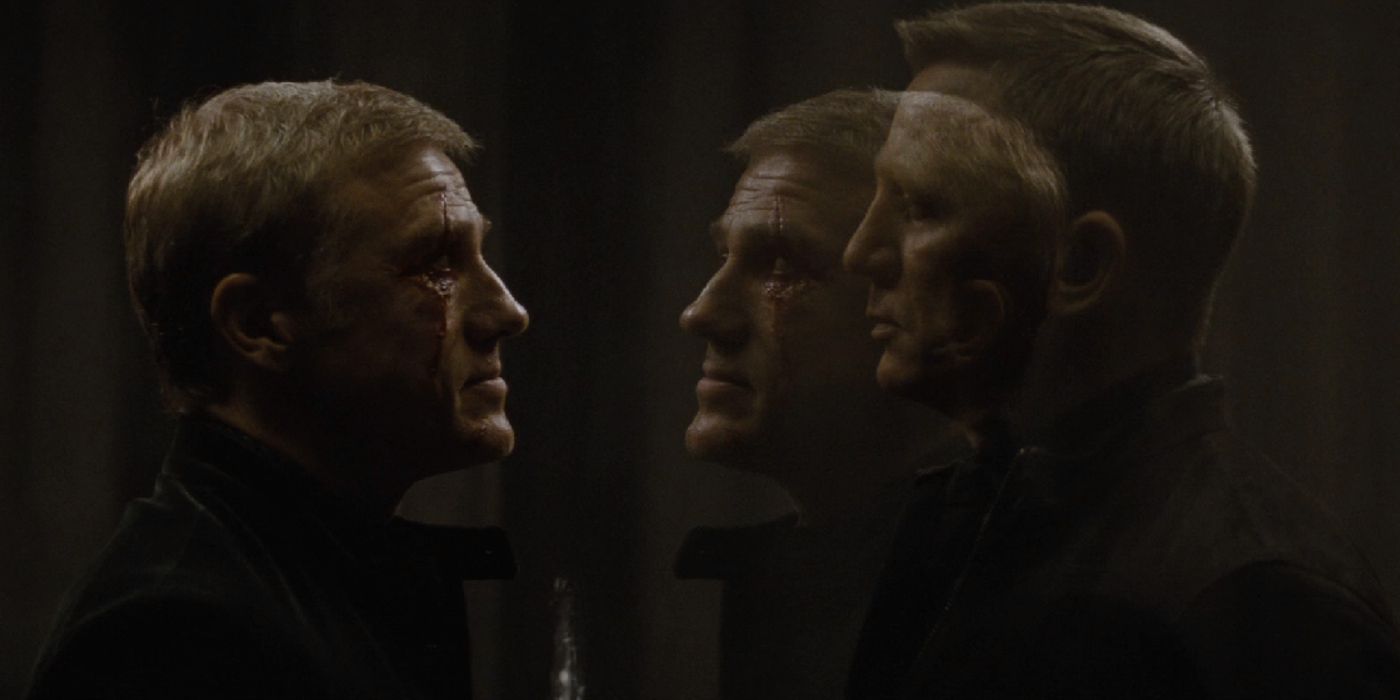Daniel Craig is almost finished with the iconic role of James Bond, but the scene that established his darker, more grounded 007 was almost cut from Casino Royale. Since the late, great Sean Connery starred in 1962’s Dr. No, five other actors have played suave spy James Bond throughout the franchise. Current 007 Daniel Craig is set to end his tenure when the upcoming No Time To Die finally arrives in late 2021.
Created by Ian Fleming, Bond has undergone a tonal transformation every time he switched actors since the character’s first film. Roger Moore’s Bond debut Live and Let Die envisioned a more comical, campy version of the character, while Timothy Dalton’s more self-serious James Bond was replaced by Pierce Brosnan’s markedly more tongue-in-cheek take. As such, when Daniel Craig signed on to play the role in the early '00s, it was widely understood that 2006’s Casino Royale would be another reinvention of the role.
However, few fans could have guessed just how much Craig’s iteration of Bond would diverge from the typical franchise formula - at least, at first. Casino Royale reimagined Bond as a realistic, cold-blooded spy who was conflicted by the bloody human cost of his job, and the Bourne-influenced 007 would continue to be a more grounded figure throughout Craig’s five films. However, according to Mads Mikkelsen's recent interview with GamesRadar, Craig’s Bond was originally a little less tortured and could have been a far less effective antihero as a result. Mikkelsen claims the torture scene in Casino Royale was almost cut due to being too intense for the franchise, saying: "It was actually on the cutting table for a while, in and out, because it was a little radical for Bond.” The cut would have been understandable, but the scene was vital to Craig’s reinvention of the Bond brand in years to come.
Casino Royale’s Torture Scene
The torture scene, which was controversial at the time of the first Daniel Craig Bond movie's release, comes late in the action of Casino Royale. Bond has won $115 million in a high-stakes poker game with the movie’s main villain, Mikkelsen’s Le Chiffre. After the villain captures him, strips him nude and ties him a chair, he starts torturing him for far longer than viewers might have expected, in a sequence that owes more to Hostel than any other Bond adventure. It’s an intense, uncomfortable scene that has none of Bond’s typical quips or smug self-certainty and as the sequence wears on for five long minutes of screen time, it becomes increasingly clear to viewers 007 doesn’t have a secret ingenious escape plan in mind.
Why Casino Royale's Torture Scene Matters
The sequence comes to an abrupt, jaw-dropping end not when Bond uses his ingenuity to escape, but instead when, in a wild subversion of Bond villain etiquette, Le Chiffre’s boss simply walks in, kills his irresponsible employee, and leaves Bond laying beside the body. Brutal and unexpected, the moment solidifies the viewer’s realization this darker, grounded Bond is nothing like his predecessors. Older, sillier Bond villains would typically rely on goofy, over-the-top death traps that left Bond ample time to think up an escape plan, the sort perfectly parodied in the Austin Powers series. In contrast, Le Chiffre is depicted as desperate, pathetic, and terrified as he tortures the spy, while Bond himself lives only due to dumb luck and seems scarred by the experience in the aftermath.
Bourne, Bond, and The Scene’s Significance
At the time of Casino Royale’s release, Paul Greengrass’s propulsive, morally ambiguous Bourne sequels had recently upped the ante in terms of the complexity audiences were willing to accept from spy movies. Jason Bourne was the victim of the shady CIA where Bond was an employee of MI6, and thus Casino Royale’s decision to make Bond the recipient of the scene's torture brought to mind the grim specter of post 9/11 “enhanced interrogation” for 2006 audiences. The scene signaled this version of 007 would not be the uncomplicated good guy viewers had grown to expect, but instead a pawn and occasional victim. Meanwhile, the depiction of Le Chiffre as a desperate, sadistic fool in over his head was a more rounded portrayal of “evil” than sillier Bond villains, making the movie’s tone darker and its murky outlook harder to pin down. Where usually Bond was a patriotic hero standing up for British values against goofy villains, here, he was a rookie agent embroiled in a high stakes money laundering scheme wherein he had no way of fixing things and no say in who won out in the end.
How Spectre Betrayed Craig’s Casino Royale Bond
As Skyfall's goofy villain proved, the Daniel Craig Bond movies gradually returned to the comfortable territory of sillier villains and the black-and-white morality that came with them. As Craig's movies progressed, the character met gadget-maker Q and bedded more and more disposable Bond girls, eventually transforming into a more self-serious version of the quippy hero of Connery’s era rather than the conflicted antihero of Casino Royale. The best encapsulation of this tonal shift came in the ending of Craig’s Bond outing Spectre.
Despite the tone remaining (perhaps a bit too) self-serious, in terms of plot, Spectre was a return to the more zany earlier Bond adventures, with Blofeld being revealed as Bond’s secret foster brother in an egregious twist. However, it is Spectre’s climactic torture scene, which inverts that of the Casino Royale scene, that epitomizes how much Craig’s Bond has strayed back into escapist heroism. Here, the villain isn’t killed by a ruthlessly efficient third party in an unexpectedly realistic shock; instead, Bond escapes via an exploding watch that would not be out of place in Roger Moore’s goofiest outings. The scene was so silly that No Time To Die director Cary Fukunaga admitted he wanted to reveal in the next film it was all a hallucination and James Bond was still being tortured. This twist could have brought back the sort of brutally realistic and unexpectedly dark tone Casino Royale’s best scene promised for the future of the franchise.

